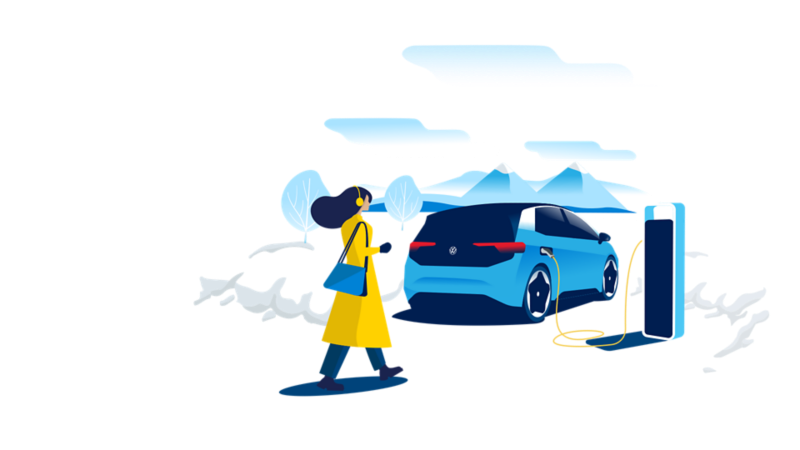Charging at low temperatures: Optimising the charging performance of your ID.
Regardless of whether your car is electric or has an internal combustion engine, frosty temperatures present a real challenge for vehicle batteries. In the case of the ID., this can lead to a reduction in charging performance. Keep reading to find out why this is, and what ID. drivers should pay attention to in the event of sub-zero temperatures.

The stated charging performance of the battery
Don’t worry if your ID. model fails to achieve its maximum charging performance in winter; a battery’s full capacity is influenced by natural physical conditions. The stated maximum charging performance is calculated under WLTP conditions, at a temperature of approx. 23°C and a charging level of 5%. If these variables change, the charging performance may deviate from the standard stated.
The impact of battery temperature
The battery performs best when charging at temperatures above 20°C. Due to its increased efficiency in comparison to internal combustion engines and the additional cooling effect provided by the airstream whilst driving, the electric drive technology experiences next to no warming on longer journeys at sub-zero temperatures – and sometimes none at all. For this reason, we have equipped our ID. models with thermal management technology, which ensures that a balance is achieved between efficiency and performance if additional heating is needed.
An example calculation: If an ID.3 Pro (58kWh net battery energy content) is charged at a battery temperature of 20°C and a state of charge of 10%, it can reach the maximum charging power of 100 kW. At 0°C and a state of charge of 10%, on the other hand, the charging power is significantly reduced at the beginning of the charging process and then increases during the charging process as the battery warms up. Here, too, the active thermal management provides support.
The impact of the charging level
The battery’s charging level also has an impact on the charging performance, as the battery cells are more receptive at a lower charging level. It is possible that two identical vehicles being charged at two identical charging stations could achieve different charging performance levels due to a difference in their charging level. The basic principle here is that a lower charging level at the beginning of the charging procedure can improve charging performance and reduce the amount of time needed.
An example calculation: If the charging procedure for an ID.3 Pro begins at the optimal temperature and with a charging level of 5%, charging performance will be 100 kW. However, if the charging level is at 50% at the beginning of the process, the maximum charging performance is 70 kW.
Follow these tips to optimise the charging performance of your ID.
- Preheat the battery: Use the vehicle's built-in navigation to drive to a fast-charging station. This way, the system preheats the battery to get to the optimal state. When you leave in the morning, enjoy a feature of the electric vehicle: Preheat the interior, defrost the windows, and along the way the high-voltage system is optimally prepared for the journey.
- Choose an appropriate parking spot: Where possible, on cold days you should park your ID. in a location that is protected from the weather, for example in a garage or underground car park.
- Keep an eye on the charging level: Begin charging at a charging station when your vehicle’s charging level is as low as possible, and only charge in short bursts to 50% or max. 80%. This reduces the amount of time needed and protects the battery.